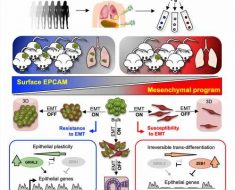In new peer-reviewed research published Nov. 3rd, 2022 in Nature Communications, Emily Spaulding, PhD. and Dustin Updike, PhD. reveal the homolog of a well-known human protein, Nucleolin, in the tiny, transparent roundworm, C. elegans.
Nucleolin is linked to human neurodegenerative disease and cancer. But the new finding challenges recent theories of the role structures inside the nucleus may play in such disorders — and surfaces a powerful new tool for researching the function of Nucleolin and how it does contribute to disease.
“Nucleolin is a multifunctional protein conserved across many animals, plants, and fungi, but previously thought to be absent in nematodes,” says Spaulding, a post-doctoral fellow in the Updike lab at Mount Desert Island Biological Laboratory. “It’s also associated with familial ALS and Alzheimer’s disease, and overall nucleolar dysfunction is linked to neurodegeneration.”
Their identification of the Nucleolin homolog (named NUCL-1) establishes C. elegans as a new discovery platform for neuronal functions of Nucleolin and the genetics of related neurodegeneration.
Nucleolin is found mainly in the nucleolus, the factory inside a cell’s nucleus where ribosomes are assembled. Unlike many other membrane-bound organelles inside cells, the nucleolus behaves like a large liquid droplet, also called a condensate.
Condensates form through liquid-to-liquid phase separation. Some imagine blobs of different densities forming inside a lava lamp, but exactly how this is achieved in living cells is unclear. Spaulding and Updike’s work shows that NUCL-1 is needed for phase separation in the C. elegans nucleolus.
Source: Read Full Article





